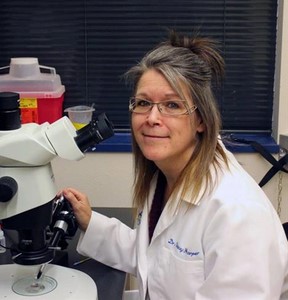
Clean Water Virtual Conference Speakers

Abstract:
Water utilities are considered an essential infrastructure to recover from a disaster. Over the last three years, wildfires have not only had devastating impacts to buildings, but also to water distribution components in a community causing contamination of drinking water in impacted areas. Typical post-wildfire burn severity has focused on the burn severity of the vegetation. This presentation will present an investigation into the water contamination experienced in the City of Santa Rosa after the 2017 Tubbs Fire and in the town of Paradise after the 2018 Camp Fire. The research presented will show a new method to calculating burn severity in an urban environment that considers buildings as fuel load. This research uses multiple data layers from Santa Rosa and Paradise to develop fragility functions for estimating the probability of a water sample being contaminated after a wildfire given the number of damaged structures surrounding the sample location. The results of this research will provide useful information for WUI water utilities regarding the implementation of mitigation strategies and the location of vulnerabilities throughout their water distribution systems to minimize damage.
Engineered Nanoparticles in Aquatic Systems: Striving for Realism and Mechanistic Understanding in Laboratory Tests - Jeff Nason
Sept. 1, 2020; 3:00 p.m. PDT

Jeff Nason is an Associate Professor of Environmental Engineering and the Associate Head for Graduate Programs in the School of Chemical, Biological and Environmental Engineering at Oregon State University. His research and teaching activities are broadly in the area of physical and chemical processes for water quality control. Recently, Nason’s group has focused on the study of particulate contaminants, including engineered nanomaterials, in aquatic systems. In addition, his group has examined the aquatic chemistry and treatment of metals in stormwater and wastewater with an emphasis on the role of natural organic matter. Nason holds a B.S. in Chemical Engineering and an M.S. in Environmental Engineering from Cornell University and a Ph.D. in Civil Engineering from the University of Texas at Austin.
Abstract:
Engineered nanoparticles (ENPs) are a promising class of novel materials with myriad potential applications ranging from electronics and drug-delivery to cosmetics and environmental remediation. Yet, much remains unknown about the fate, transport, and toxicity of these materials once released to the environment. Upon release and through their life-cycle spanning manufacture, use and disposal, ENPs can undergo many physical and chemical transformations that ultimately control their resultant behavior. Of particular importance are the processes of eco-corona formation, the adsorption of naturally occurring macromolecules to the surfaces of ENPs, and aggregation, the attachment of ENPs to one another or to other particles in suspension. These processes dramatically change the physical and chemical properties of ENPs.
This talk will summarize our work investigating the complex and interrelated roles that natural and engineered surface coatings, aquatic chemistry, and the presence of suspended particulate matter play in the behavior of engineered nanomaterials in aquatic systems. It will highlight the lessons we have learned as we have attempted to work in more complex aquatic matrices that account for the transformations that occur throughout the ENP life-cycle and in systems where multiple processes are occurring simultaneously.
Convergence on Micro and Nano-plastics in Aquatic Environments - Stacey Harper and Susanne Brander
Sept. 1, 2020; 4:00 p.m. PDT

Stacey Harper is an Associate Professor at Oregon State University in the Department of Environmental and Molecular Toxicology and the School of Chemical, Biological, and Environmental Engineering and is a Signature Researcher of the Oregon Nanoscience and Microtechnologies Institute. In her research, she utilizes novel, multidisciplinary approaches, and state-of-the-art technology to address important questions arising from human and environmental exposures to nanoscale materials. A recent focus of her research program is on the transport, fate, and effects of micro and nanoscale plastics. Her research group spans disciplines such as toxicology, environmental engineering, biology, and bioresources research. Harper is actively engaged in the national and international standards for nanotechnology environmental, health, and safety serves as a representative on the ANSI-accredited U.S. Technological Advisory Group for ISO/TC 229 Nanotechnologies and is past chair of the ASTM International Committee E56 on Nanotechnology. She is an active faculty member in the Environmental Health Sciences Center, is a member of the NIEHS Toxicology Training program at OSU, and is a Co-leader of the Superfund Research Center Research Translation Core.

Susanne Brander has been faculty at Oregon State University since 2017, after moving from the University of North Carolina, Wilmington where she was faculty for four years. Brander’s research in the Dept. of Fisheries and Wildlife, COMES encompasses the fields of toxicology, endocrinology, and ecology; integrating molecular approaches with measurements at the organism and population level. Brander’s main focus is on the effects of stressors such as emerging pollutants, plastics, and changing climate on aquatic organisms, but her research and teaching also span the links between ecological and human health. She has a Ph.D. in Toxicology and Pharmacology from UC Davis (2011), and an M.S. in Environmental Science and Policy from Johns Hopkins University (2005).
Abstract:
Aquatic ecosystems are polluted with plastic waste on a global scale. As plastics degrade in the environment, they inevitably pass through the size range in which they would be considered microplastics (< 5mm) and nanoplastics (1-1000 nm). Micro- and nanoplastics can be ingested by numerous aquatic and terrestrial organisms, including humans. Furthermore, it is well-documented that nanoscale-sized particles can be directly taken up into cells, and that ingested particles <150 microns can cross the epithelial lining of the digestive tract into other tissues. Ingestion or uptake can induce oxidative stress and damage tissues in fish and other aquatic organisms critical to the food web and can alter growth and reproduction causing an increase in neonate malformations and a potential decrease in population size. In order to inform risk assessments and policy, and to establish knowledge for micro- and nanoplastics remediation, there is a need to establish foundational data on the fate and effects of these small plastics in aquatic environments as well as what factors influence their deposition and effects.
In response to these gaps in our knowledge, the Pacific Northwest Consortium on Plastics: Convergence on Micro and Nano-plastics in Aquatic Environments was recently sponsored by the National Science Foundation under their Growing Convergence Research Big Idea program. The research aim of our work focuses on micro and nanoplastic transport, fate, uptake, and impacts in aquatic systems – ranging from freshwater to marine systems. The overarching goal of this convergent research is to provide foundational information about what plastics’ features (e.g., composition, size, shape) and environmental components (e.g. salinity, primary and secondary producer characteristics, lipid content) are determinative of risk. The Consortium's aim of the project brings together regional scientists, regulators, and community coalitions in the Pacific Northwest to compile data on plastics occurrence, transport through the environment, breakdown, and consequential effects on organisms and ecosystems in an effort to support risk decision-makers. Data on the occurrence and toxicity are being used to establish a plastic-specific, multi-stressor risk assessment model to aid decision-makers. We work with Consortium partners to identify data-rich areas that would serve as good case studies based on broad criteria (adequate data sets, important location, cooperative and collaborative stakeholders, and a site that appreciates the adaptive management model). The social and environmental problem of plastics in the environment is of critical concern, so the Consortium also offers a mechanism to educate the public on the hazards of, and research directed on, plastics.